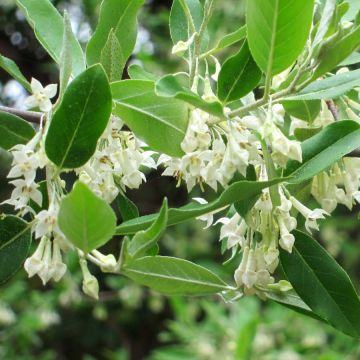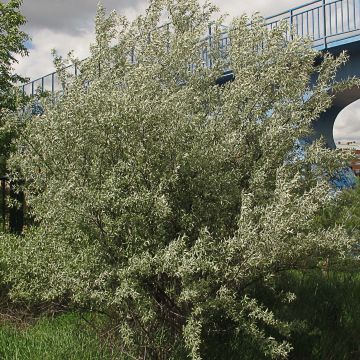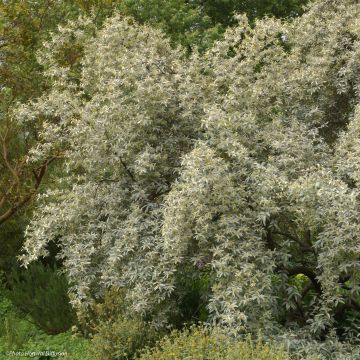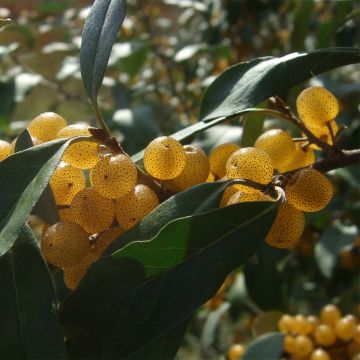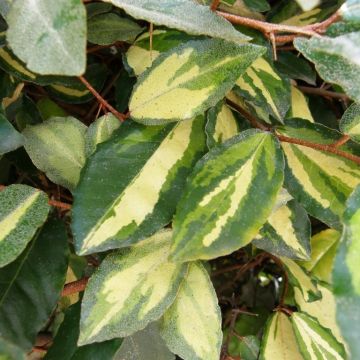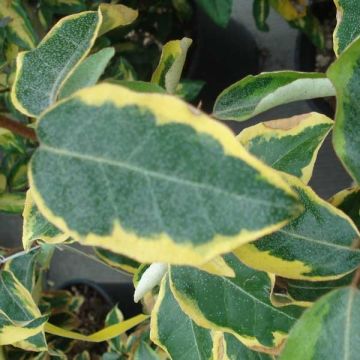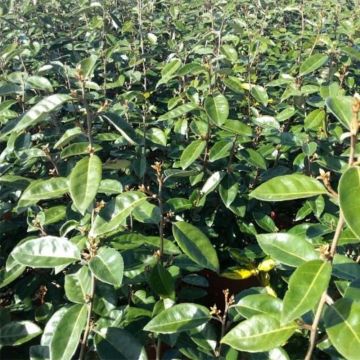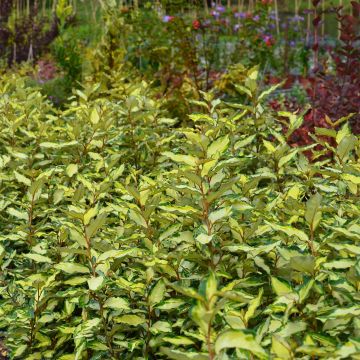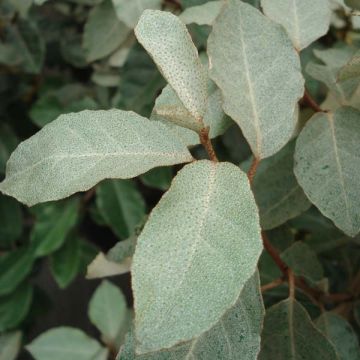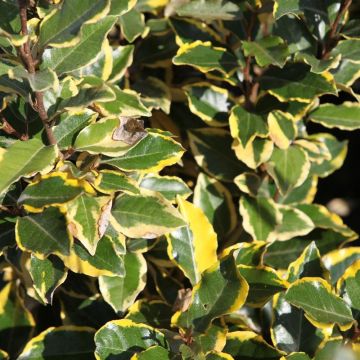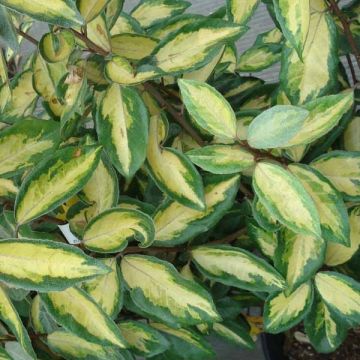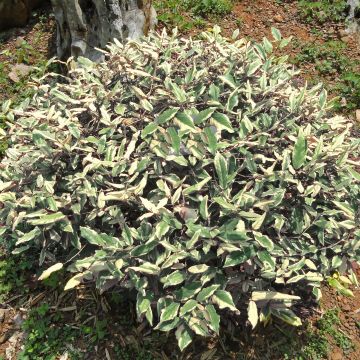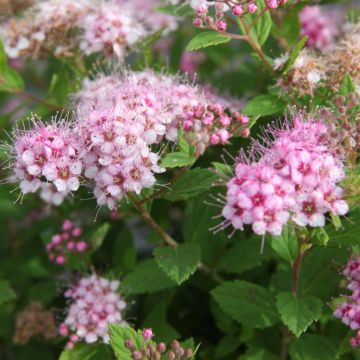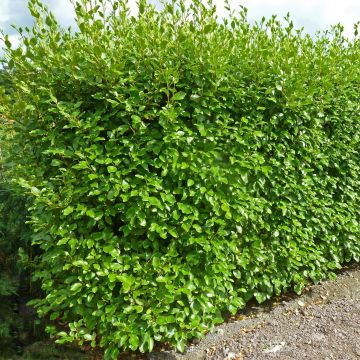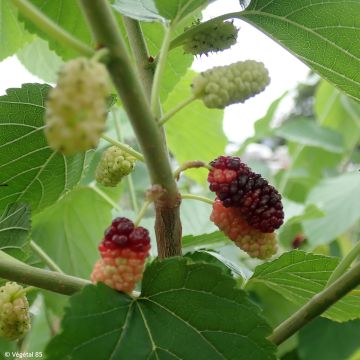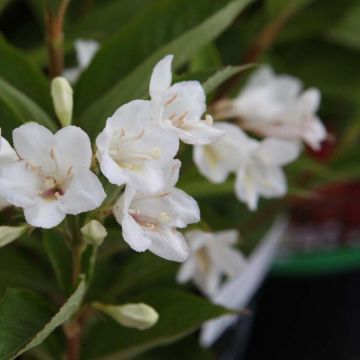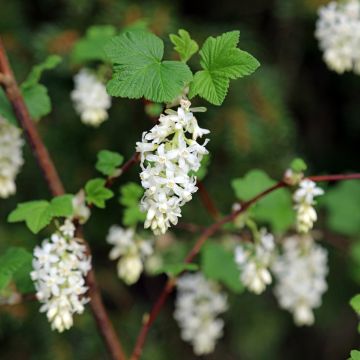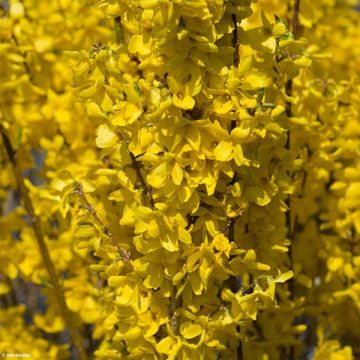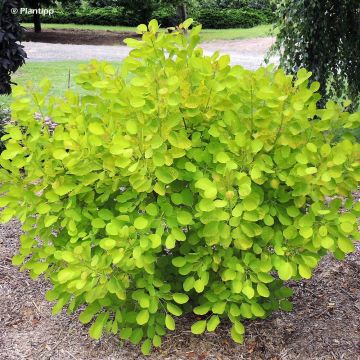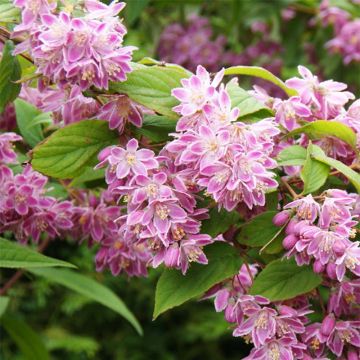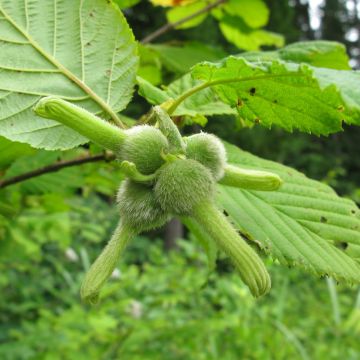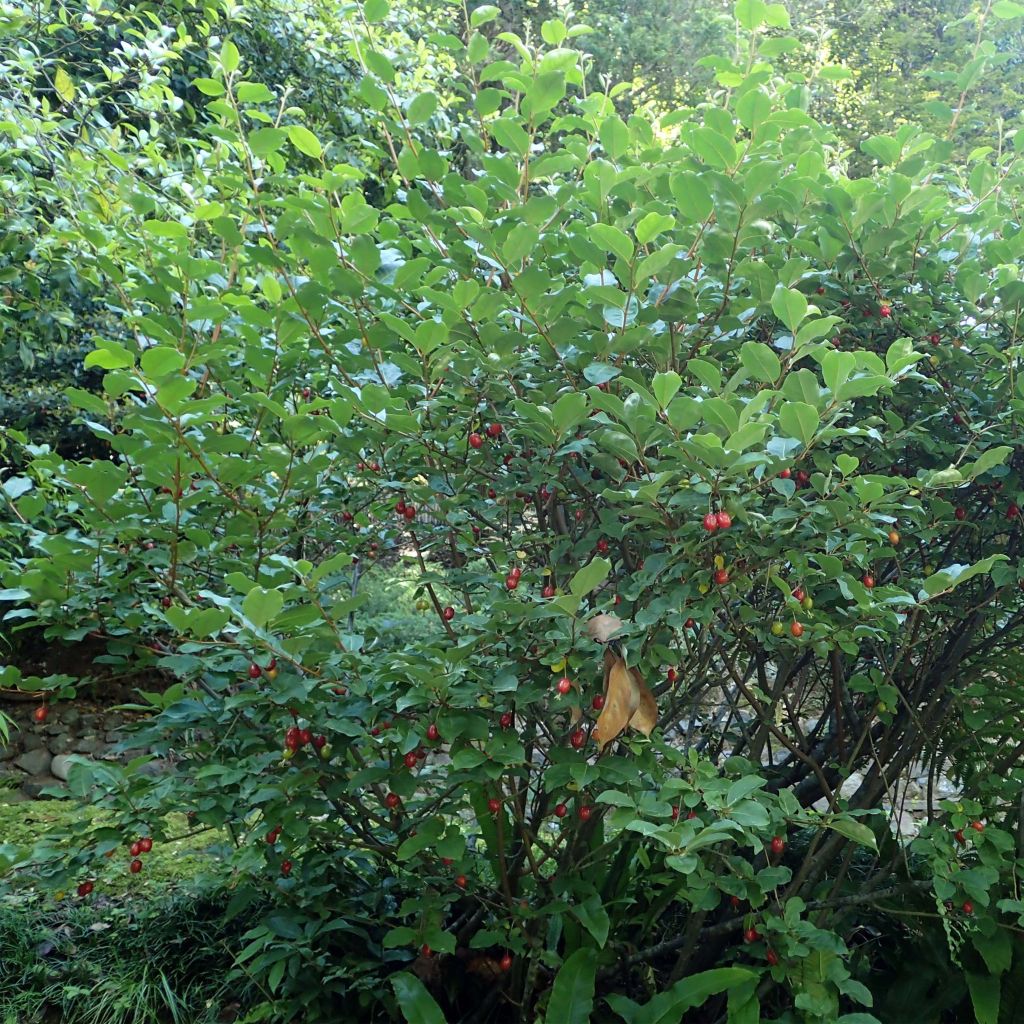

Elaeagnus multiflora - Goumi
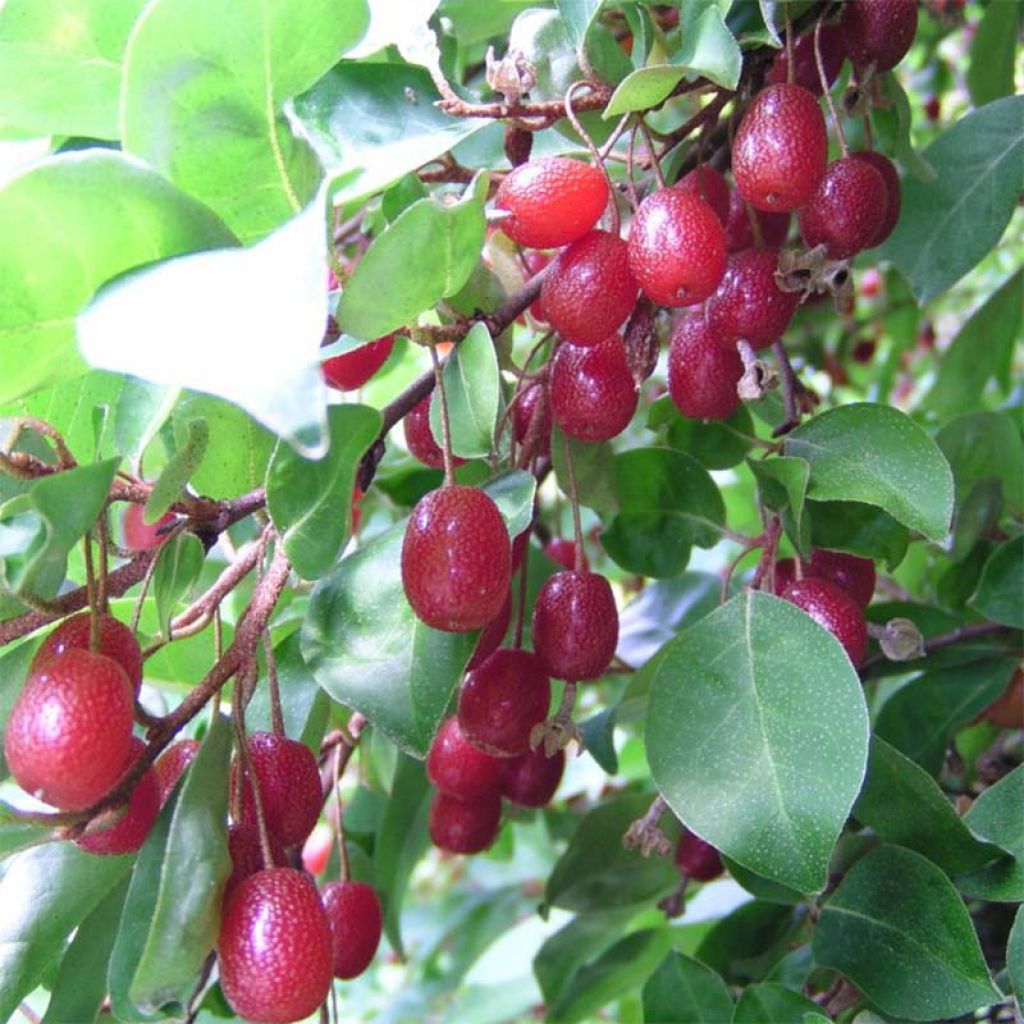

Elaeagnus multiflora - Goumi
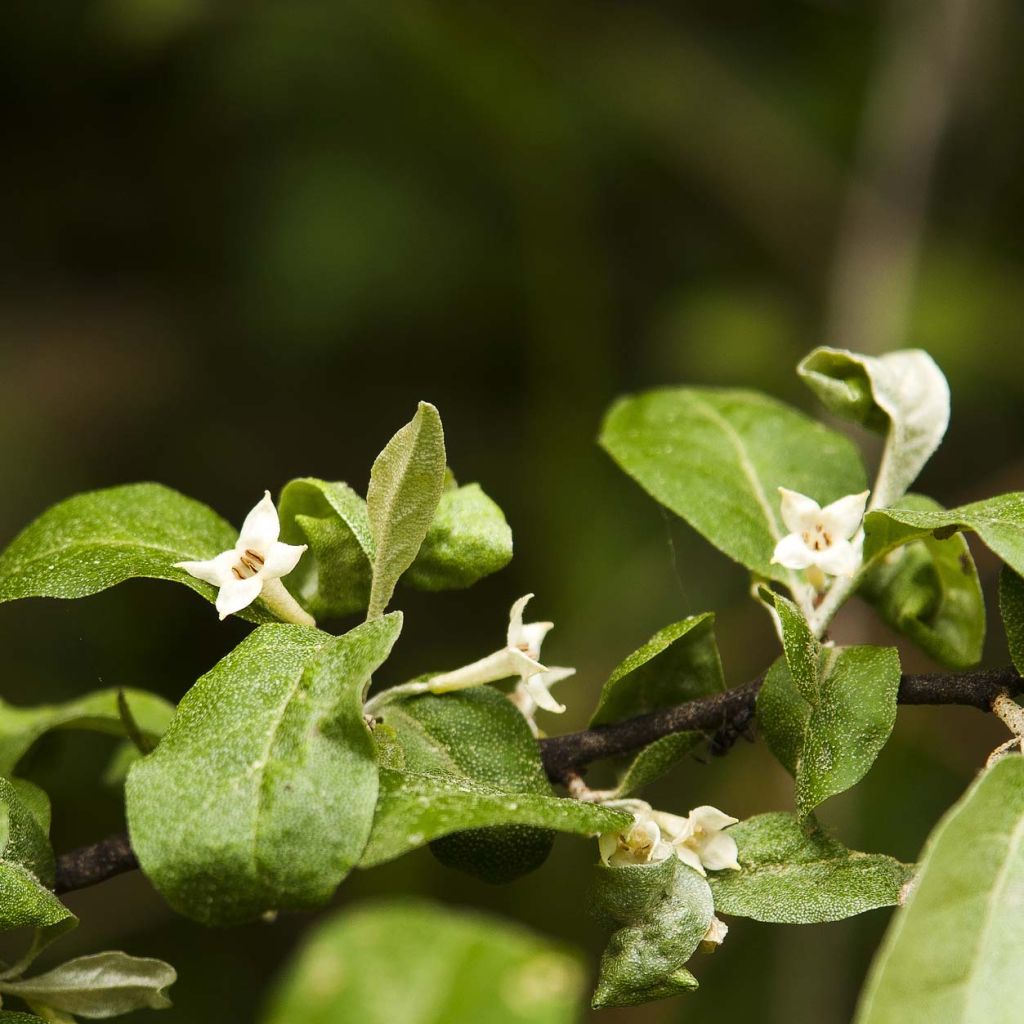

Elaeagnus multiflora - Goumi
Elaeagnus multiflora - Goumi
Elaeagnus multiflora
Goumi
Why not try an alternative variety in stock?
View all →This plant carries a 24 months recovery warranty
More information
We guarantee the quality of our plants for a full growing cycle, and will replace at our expense any plant that fails to recover under normal climatic and planting conditions.
From €5.90 for pickup delivery and €6.90 for home delivery
Express home delivery from €8.90.
Delivery to Corse prohibited: UE law prohibits the import of this plant from mainland France to Corse as part of the fight against Xylella fastidiosa. Please accept our sincere apologies.
More information

Does this plant fit my garden?
Set up your Plantfit profile →
Description
Elaeagnus multiflora, better known as the Japanese Goumi, is part of the tribe of Asian chalefs with generally deciduous foliage and edible fruit. It is a small, robust, self-fertile tree with a broad habit, lush vegetation, and pleasantly fragrant spring flowering. Its small red fruits, with medicinal and tonic properties, ripen in summer. Easy to grow in all regions, it is an excellent informal, rustic, or fruit hedge bush.
The Japanese Goumi is a large deciduous shrub in the Elaeagnaceae family, native to East Asia, specifically China, Japan, and North Korea.
Its growth is rapid, forming a branching bush within 5 or 6 years, dense but flexible and spreading as wide as it is tall, reaching up to 3 m (9 ft 10 in) in all directions. Its deciduous foliage persists for a long time before falling, sometimes semi-evergreen (in mild climates) or marcescent, meaning that the dry leaves remain attached to the branches in winter. The reddish young branches are covered with tiny scales. They bear entire, ovate leaves, 3 to 10 cm (1.2 to 3.9 in) long and 2 to 5 cm (0.8 to 2 in) wide, with wavy edges. They are a matte green on the upper side, silver to orange-brown with small dense scales on the underside. The small star-shaped, white-cream to pale yellow and quite insignificant flowers, are solitary or paired at the axil of the leaves. They usually appear in the middle of spring, in April-May depending on the climate. They are pleasantly fragrant and nectar-rich, visited by bees. They give way to small oval fruits 1 cm (0.4 in) long, slightly translucent, covered with tiny silver or brown pustules. They gradually turn orange, reddish-orange, and then cherry red, and are ripe in July-August. They are edible, sweet and tangy, slightly astringent but particularly rich in vitamins and antioxidants. They can be enjoyed as compote or jelly. Birds are also fond of them. The plant is self-fertile, but the harvest will be larger with several plants. The root system of Elaeagnus, like that of plants in the Fabaceae family (alfalfa, sainfoin), is perfectly adapted to poor soils, which it helps to enrich.
A clump of Elaeagnus multiflora will always be welcome in a garden that makes room for nature. With its fragrant flowering and amusing small fruits, it will delight curious gardeners and enthusiasts. Its vigour, resistance, and great adaptability make it an excellent informal or windbreak hedge plant, capable of growing enthusiastically in any ordinary soil if it is sufficiently deep. It is valuable in a seaside garden or in a windy region. It can be used in a mixed hedge, in the company of other beautiful fruit shrubs such as ornamental apple trees, prunus, Arbutus unedo, Amelanchier canadensis, dogwoods, or even Hippophae rhamnoides and Poncirus trifoliata.
Report an error about the product description
Elaeagnus multiflora - Goumi in pictures
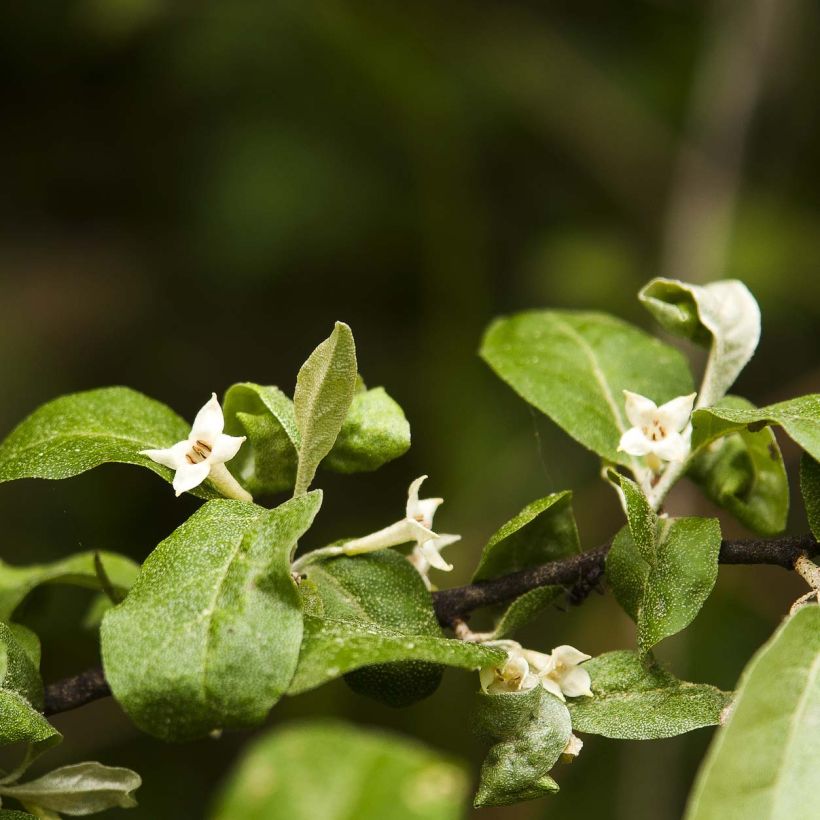

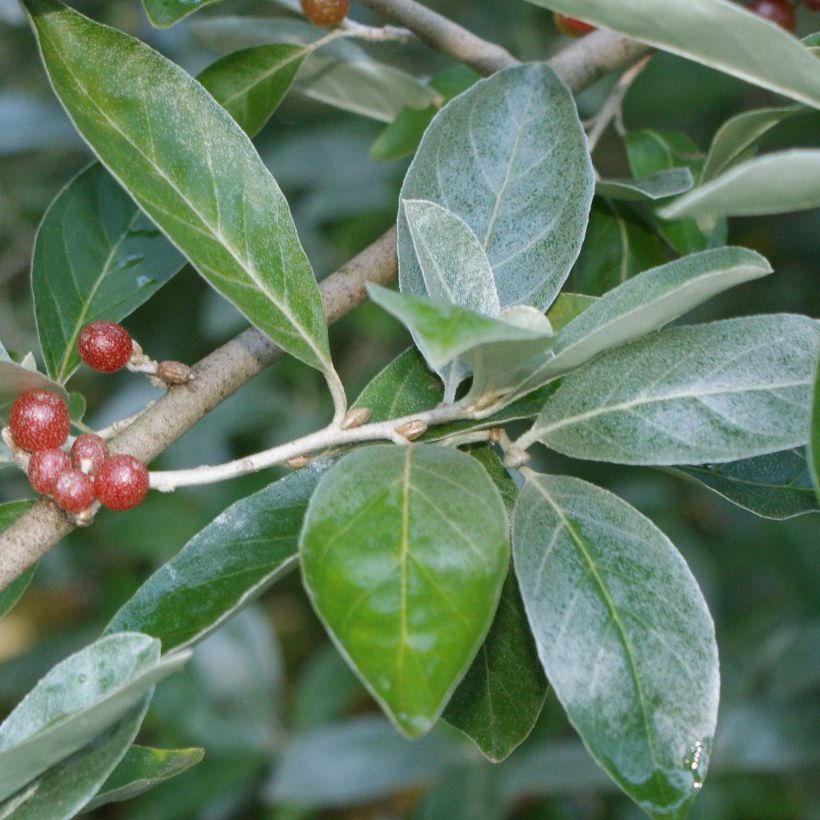

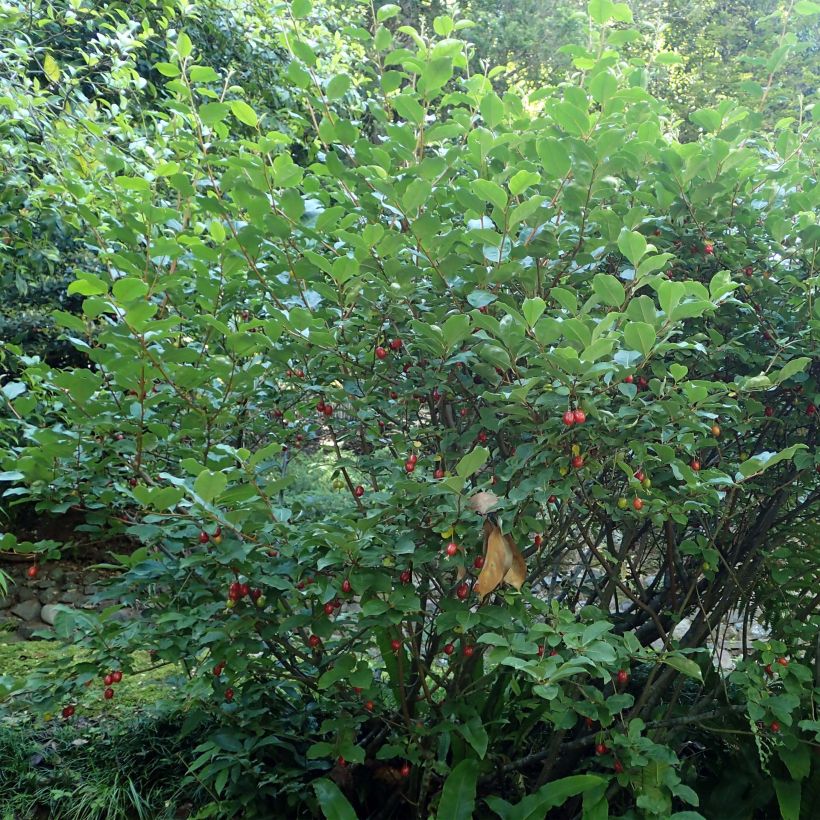

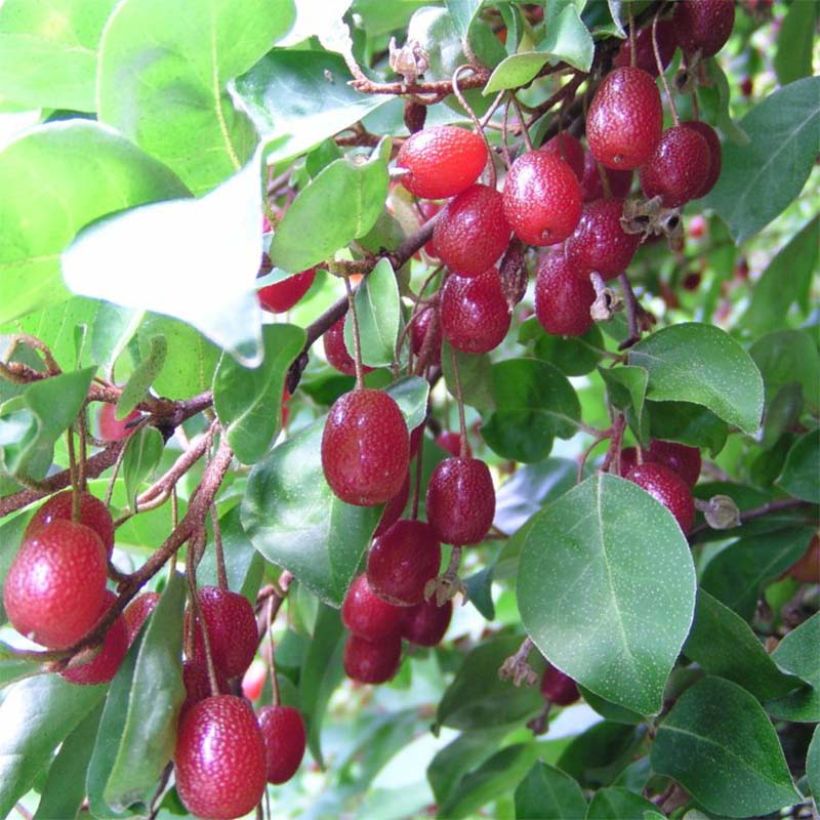

Plant habit
Flowering
Foliage
Botanical data
Elaeagnus
multiflora
Elaeagnaceae
Goumi
East Asia
Other Elaeagnus - Oleaster
Planting and care
Plant Elaeagnus multiflora in any deep soil, slightly acid, neutral or even slightly chalky. It prefers light and sandy soils, even poor ones, that remain slightly moist in summer. It also tolerates drier soils if they are loose and well-worked. Once well established, it can survive without watering in summer, even in hot and dry climates. It will thrive in partial shade (in warm climates) or in full sun, even in windy conditions and by the seaside. In the first few years, undertake a light training pruning at the end of winter. Afterwards, simply maintain the shape's harmony, at the end of winter.
Planting period
Intended location
Care
-
, onOrder confirmed
Reply from on Promesse de fleurs
Hedge shrubs
Haven't found what you were looking for?
Hardiness is the lowest winter temperature a plant can endure without suffering serious damage or even dying. However, hardiness is affected by location (a sheltered area, such as a patio), protection (winter cover) and soil type (hardiness is improved by well-drained soil).

Photo Sharing Terms & Conditions
In order to encourage gardeners to interact and share their experiences, Promesse de fleurs offers various media enabling content to be uploaded onto its Site - in particular via the ‘Photo sharing’ module.
The User agrees to refrain from:
- Posting any content that is illegal, prejudicial, insulting, racist, inciteful to hatred, revisionist, contrary to public decency, that infringes on privacy or on the privacy rights of third parties, in particular the publicity rights of persons and goods, intellectual property rights, or the right to privacy.
- Submitting content on behalf of a third party;
- Impersonate the identity of a third party and/or publish any personal information about a third party;
In general, the User undertakes to refrain from any unethical behaviour.
All Content (in particular text, comments, files, images, photos, videos, creative works, etc.), which may be subject to property or intellectual property rights, image or other private rights, shall remain the property of the User, subject to the limited rights granted by the terms of the licence granted by Promesse de fleurs as stated below. Users are at liberty to publish or not to publish such Content on the Site, notably via the ‘Photo Sharing’ facility, and accept that this Content shall be made public and freely accessible, notably on the Internet.
Users further acknowledge, undertake to have ,and guarantee that they hold all necessary rights and permissions to publish such material on the Site, in particular with regard to the legislation in force pertaining to any privacy, property, intellectual property, image, or contractual rights, or rights of any other nature. By publishing such Content on the Site, Users acknowledge accepting full liability as publishers of the Content within the meaning of the law, and grant Promesse de fleurs, free of charge, an inclusive, worldwide licence for the said Content for the entire duration of its publication, including all reproduction, representation, up/downloading, displaying, performing, transmission, and storage rights.
Users also grant permission for their name to be linked to the Content and accept that this link may not always be made available.
By engaging in posting material, Users consent to their Content becoming automatically accessible on the Internet, in particular on other sites and/or blogs and/or web pages of the Promesse de fleurs site, including in particular social pages and the Promesse de fleurs catalogue.
Users may secure the removal of entrusted content free of charge by issuing a simple request via our contact form.
The flowering period indicated on our website applies to countries and regions located in USDA zone 8 (France, the United Kingdom, Ireland, the Netherlands, etc.)
It will vary according to where you live:
- In zones 9 to 10 (Italy, Spain, Greece, etc.), flowering will occur about 2 to 4 weeks earlier.
- In zones 6 to 7 (Germany, Poland, Slovenia, and lower mountainous regions), flowering will be delayed by 2 to 3 weeks.
- In zone 5 (Central Europe, Scandinavia), blooming will be delayed by 3 to 5 weeks.
In temperate climates, pruning of spring-flowering shrubs (forsythia, spireas, etc.) should be done just after flowering.
Pruning of summer-flowering shrubs (Indian Lilac, Perovskia, etc.) can be done in winter or spring.
In cold regions as well as with frost-sensitive plants, avoid pruning too early when severe frosts may still occur.
The planting period indicated on our website applies to countries and regions located in USDA zone 8 (France, United Kingdom, Ireland, Netherlands).
It will vary according to where you live:
- In Mediterranean zones (Marseille, Madrid, Milan, etc.), autumn and winter are the best planting periods.
- In continental zones (Strasbourg, Munich, Vienna, etc.), delay planting by 2 to 3 weeks in spring and bring it forward by 2 to 4 weeks in autumn.
- In mountainous regions (the Alps, Pyrenees, Carpathians, etc.), it is best to plant in late spring (May-June) or late summer (August-September).
The harvesting period indicated on our website applies to countries and regions in USDA zone 8 (France, England, Ireland, the Netherlands).
In colder areas (Scandinavia, Poland, Austria...) fruit and vegetable harvests are likely to be delayed by 3-4 weeks.
In warmer areas (Italy, Spain, Greece, etc.), harvesting will probably take place earlier, depending on weather conditions.
The sowing periods indicated on our website apply to countries and regions within USDA Zone 8 (France, UK, Ireland, Netherlands).
In colder areas (Scandinavia, Poland, Austria...), delay any outdoor sowing by 3-4 weeks, or sow under glass.
In warmer climes (Italy, Spain, Greece, etc.), bring outdoor sowing forward by a few weeks.

































